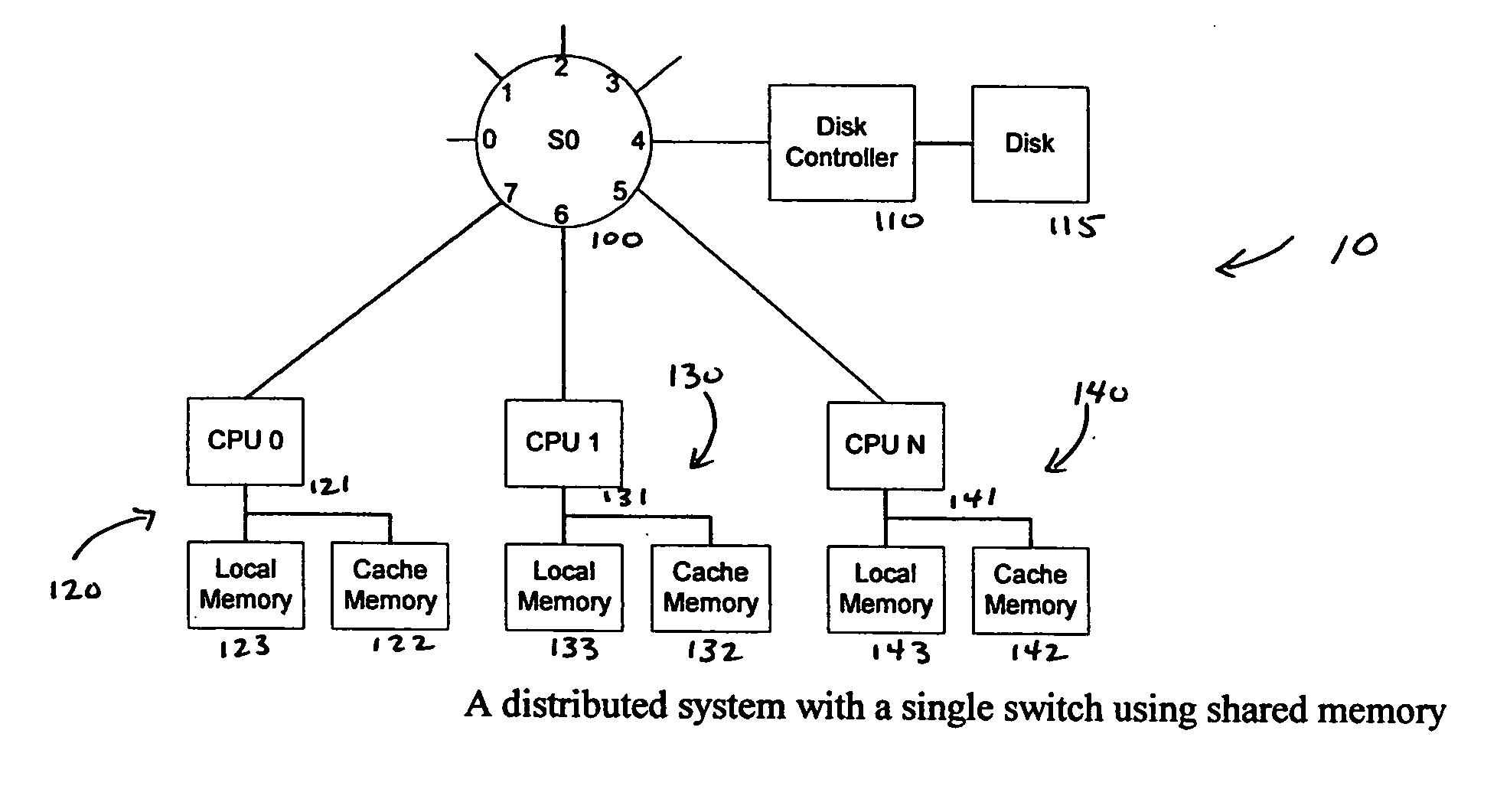Cache coherency mechanism
a coherency mechanism and cache technology, applied in the field of cache coherency mechanism, can solve the problems of affecting performance, non-uniform memory access, and the complexity of today's computer system, and achieve the effects of minimizing latency, maximizing performance, and speeding up transmission
- Summary
- Abstract
- Description
- Claims
- Application Information
AI Technical Summary
Benefits of technology
Problems solved by technology
Method used
Image
Examples
Embodiment Construction
[0025] Cache coherency in a NUMA system requires communication to occur among all of the various caches. While this presents a manageable problem with small numbers of processors and caches, the complexity of the problem increases as the number of processors increased. Not only are there more caches to track, but also there is a significant increase in the number of communications between these caches necessary to insure coherency. The present invention reduces that number of communications by tracking the contents of each cache and sending communications only to those caches that have the data resident in them. Thus, the amount of traffic created is minimized.
[0026]FIG. 1 illustrates a distributed processing system, or specifically, a shared memory NUMA system 10 where the various CPUs are all in communication with a single switch. This switch is responsible for routing traffic between the processors, as well as to and from the disk storage 115. In this embodiment, CPU subsystem 1...
PUM
 Login to View More
Login to View More Abstract
Description
Claims
Application Information
 Login to View More
Login to View More - R&D
- Intellectual Property
- Life Sciences
- Materials
- Tech Scout
- Unparalleled Data Quality
- Higher Quality Content
- 60% Fewer Hallucinations
Browse by: Latest US Patents, China's latest patents, Technical Efficacy Thesaurus, Application Domain, Technology Topic, Popular Technical Reports.
© 2025 PatSnap. All rights reserved.Legal|Privacy policy|Modern Slavery Act Transparency Statement|Sitemap|About US| Contact US: help@patsnap.com



